Ideal for birdwatchers, flower lovers, history buffs, hikers or just those looking to escape the summer heat, the Tengjhih National Forest Recreation Area (藤枝國家森林遊樂區) in Kaohsiung has something for everyone. Despite being closed for over 10 years, the facilities are in excellent shape; but don’t wait too long to visit, as there’s no telling when the next big typhoon will close it once again.
The park contains almost equal parts primeval forest and reforested areas, with the balance slightly in favor of the former. During the Japanese era, the Tengjhih area was a research forest for Kyoto University, but it experienced intensive logging in later years. When logging came to an end in the 1980s, it was finally repurposed as a recreation area for tourists. All logged areas have regenerated nicely and visitors can now experience both broadleaf and conifer trees, along with an abundance of birds and flowers, in a serene mountain environment that is often enveloped in fog. Expect temperatures to be 8 to 10 degrees cooler than in the lowlands: perfect for those stifling summer days.
In order to allow for logging operations, a road to Tengjhih was built by Chinese Nationalist Party military veterans in cooperation with locals in the 1950s. Unlike most forest roads, it is two lanes for most of its length and has an asphalt surface, making for a comfortable drive. Along the way, the road passes by the Bunun village of Erjituan (二集團), which has the distinction of being the highest village south of Chiayi in western Taiwan. At the 18-kilometer marker, the road is currently blocked off, a result of Tengjhih’s unfortunate fate in recent years.
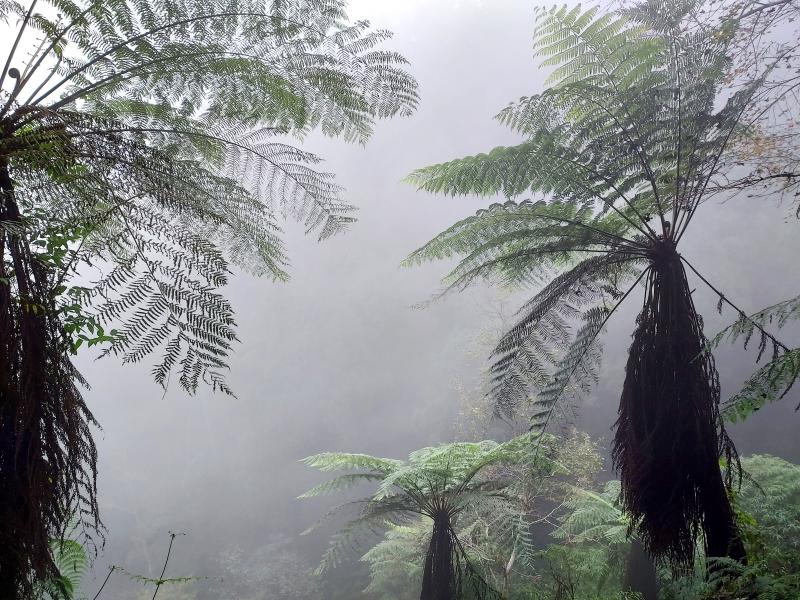
Photo: Tyler Cottenie
THE PARK THAT JUST CAN’T STAY OPEN
Originally opened in 1983, the park operated normally until the infamous Typhoon Morakot utterly destroyed the last kilometer of road leading to the park in 2009. Repairs were undertaken, but before the park could reopen, another typhoon in 2012 washed away the same section of road. Authorities called a halt to repairs after this, and the park’s future remained in limbo for years. Finally, in 2019, the park was provisionally reopened for a period of three months, with visitors having to take a detour around the washed-out road on foot to access the park. Road work started up again and by early last year, Tengjhih was once again connected to the outside world by road. The park fully reopened to the public on May 7 after a hiatus of over a decade.
Just three months later, nearly two meters of rain fell on Tengjhih in a single week. The same section of road was once again washed away, and the park closed again.
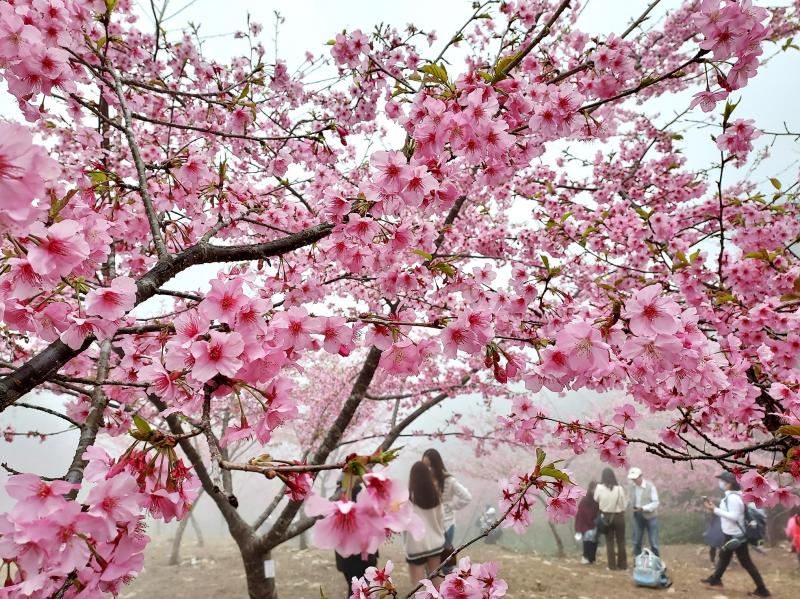
Photo: Tyler Cottenie
Luckily, authorities did not wait for the road to be repaired before opening the park this time. On Dec. 31, the park was reopened to the public, with visitors now having to walk a kilometer-long forest trail detour to reach the park entrance. This adds an extra hour and some extra exertion to any trip to Tengjhih that should be factored in when planning a visit.
After reporting to the ticket counter and purchasing an entrance ticket, visitors enter the park via an easy 15-minute walk on an asphalt road that leads to the Visitor Center. From here, a network of trails branches out. There is one long loop that takes several hours to walk, and a connecting trail in the middle for those wanting to make a shorter loop. For those who only want a casual stroll in the forest without much exertion, simply forego making a loop and walk in and out a short while on the leftmost trail, the Sea of Trees Trail.
Just a short walk down this easy, flat path is the Cryptomeria Observation Deck. This is a flat area with picnic tables and benches surrounded by planted Japanese cedar (Cryptomeria) trees. This species, first imported by the Japanese for reforestation, was one of the most commonly used species throughout Taiwan’s entire logging period. It is a beautiful, straight tree with reddish bark. The juxtaposition of these vertical trees with the horizontal lines of the picnic grounds makes for a picturesque, almost garden-like setting enticing visitors to stop and take a break here.
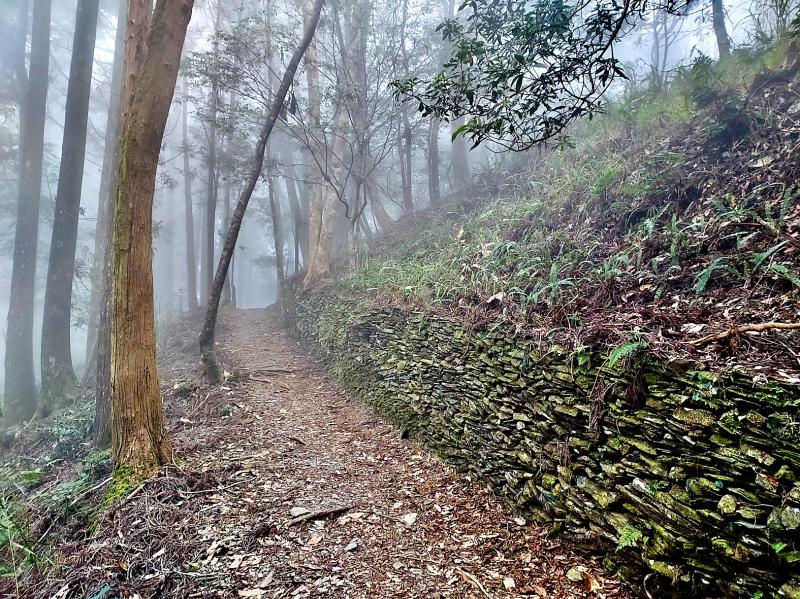
Photo: Tyler Cottenie
The flat trail continues on for a time, ending at another rest area, at which point the Taiwan Rhododendron Trail begins its steep ascent up the mountain. In the spring, the rhododendron trees along this trail are in full bloom, dotting the forest with a gorgeous pink. Just as this trail nears the top of its steepest ascent, keen observers will notice the remains of a much older trail in front of them: the Liugui Garrison Trail (六龜警備道). University research facilities were not the only Japanese installations in these mountains.
AN ELECTRIFYING HISTORY
The Liugui Garrison Trail was one of many built in Taiwan at the time to separate Japanese and Han Chinese from mountain Indigenous people. A 50-meter-wide swath of trees was cleared along the ridge and electric fencing with enough current to kill was installed for protection. The trail was raised along most of its length, with clearly demarcated stone sides. Stone-walled police stations were built at regular intervals and low areas were bridged using stone, with culverts for drainage where necessary.
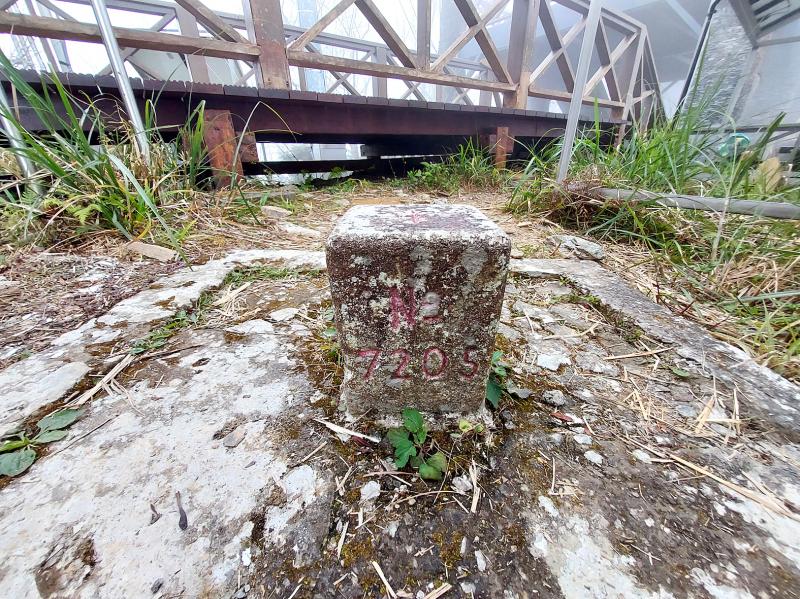
Photo: Tyler Cottenie
Though the trees have all grown back and the fencing is gone, these stone structures still remain in many places. Hikers on the Taiwan Rhododendron Trail will encounter both raised stone roads and building remains at the Fuchu Police Station (府中分遣所). After this station, a large portion of the current trail is on the original Liugui Garrison Trail.
Continuing the loop, visitors then reach the site of a former forest fire watch tower at the peak of East Tengjhih Mountain (東藤枝山), one of Taiwan’s Minor 100 Peaks. The watch tower fell into disrepair and was replaced by a two-tiered wood and slate deck and observation platform around the turn of the century. At 1,804 meters, this is the highest point on the Tengjhih trail system and makes for a perfect rest spot. On clear days, a climb up to the second level should afford visitors with commanding views of the adjacent valleys.
Not far ahead, another rest area marks the site of the Okabe (岡部) Police Station. From here, one can turn right and descend to the Japanese cedar rest area again, or continue straight to return to the Visitor Center. The park’s namesake, the Tengjhih Police Station, is not far away either, but no official trails exist to reach these remains. The Visitor Center has a basic shop with souvenirs, noodles, rice dumplings, drinks and souvenirs. There is plenty of seating indoors and out, and a small library of local history books to browse.
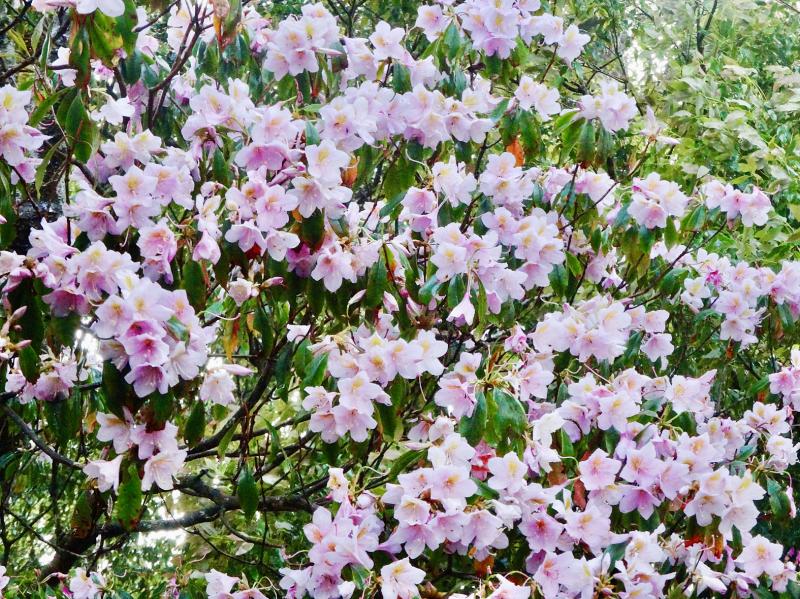
Photo: Tyler Cottenie
There are no overnight accommodations in Tengjhih, but homestays are available in nearby Erjituan. Even for day trippers, this village is worth a visit. On weekends, there is a market set up selling local foods like fig jelly and roast boar. In January and February each year, the nearby cherry blossom park attracts thousands of visitors. A stop in Erjituan before the long drive home makes for a perfect ending to any trip to Tengjhih.
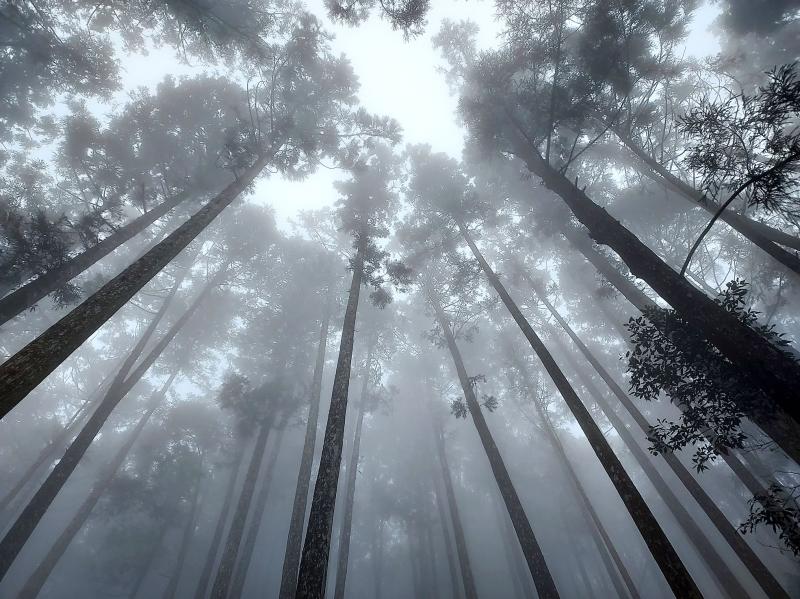
Photo: Tyler Cottenie

In 1990, Amy Chen (陳怡美) was beginning third grade in Calhoun County, Texas, as the youngest of six and the only one in her family of Taiwanese immigrants to be born in the US. She recalls, “my father gave me a stack of typed manuscript pages and a pen and asked me to find typos, missing punctuation, and extra spaces.” The manuscript was for an English-learning book to be sold in Taiwan. “I was copy editing as a child,” she says. Now a 42-year-old freelance writer in Santa Barbara, California, Amy Chen has only recently realized that her father, Chen Po-jung (陳伯榕), who

Famed Chinese demographer Yi Fuxian (易富賢) recently wrote for The Diplomat on the effects of a cross-strait war on demography. He contended that one way to deter the People’s Republic of China (PRC) is by putting the demographic issue front and center — last year total births in the PRC, he said, receded to levels not seen since 1762. Yi observes that Taiwan’s current fertility rate is already lower than Ukraine’s — a nation at war that is refusing to send its young into battle — and that its “demographic crisis suggests that Taiwan’s technological importance will rapidly decline, and

Jan. 6 to Jan. 12 Perhaps hoping to gain the blessing of the stone-age hunter-gatherers that dwelt along the east coast 30,000 years ago, visitors to the Baxian Caves (八仙洞) during the 1970s would grab a handful of soil to bring home. In January 1969, the nation was captivated by the excavation of pre-ceramic artifacts and other traces of human habitation in several caves atop a sea cliff in Taitung County. The majority of the unearthed objects were single-faced, unpolished flake tools fashioned from natural pebbles collected by the shore. While archaeologists had found plenty of neolithic (7,000 BC to 1,700

Her greatest fear, dormant for decades, came rushing back in an instant: had she adopted and raised a kidnapped child? Peg Reif’s daughter, adopted from South Korea in the 1980s, had sent her a link to a documentary detailing how the system that made their family was rife with fraud: documents falsified, babies switched, children snatched off the street and sent abroad. Reif wept. She was among more than 120 who contacted The Associated Press this fall, after a series of stories and a documentary made with Frontline exposed how Korea created a baby pipeline, designed to ship children abroad as quickly as